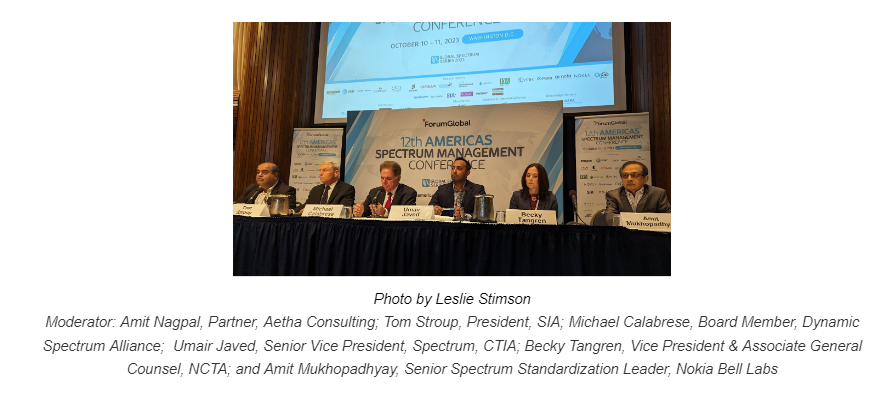Several competing industries, including telecom, cable, satellite, and more, continue to need more spectrum as new applications and technologies are developed. But where will it come from?
Right now, the U.S. spectrum pipeline is empty, say experts at the 12th Americas Spectrum Management Conference in Washington, D.C. on Tuesday. They say it’s imperative that Congress reauthorize the FCC’s spectrum auction authority.
In the meantime, industries need to look ahead and anticipate their spectrum needs. Satellite Industry Association President (SIA) Tom Stroup said about 10 years ago, there were approximately 10,000 satellites in-orbit. Now, “we’re on-track to have more than 100,000 in space by the end of this year.”
Audio and video distribution continue to be the mainstay of the industry. He also noted that mobile devices that can receive a satellite signal are increasingly being used to save lives.
Dynamic Spectrum Alliance Board Member Michael Calabrese said in discussing a national spectrum strategy, the group advocated for a “balanced” approach, between licensed, lightly licensed and unlicensed uses. “We advocated for a default policy of ‘use it or share it.’”
The concept has been proved in the CBRS band, he said. It’s working around the Navy’s needs “without interference.” The alliance proposes the national spectrum strategy “reflect actual use.” The FCC and NTIA have charts, “but know little about actual use,” he said, adding industries need to know more about geography and power levels to feed into a national spectrum strategy.
CTIA VP Spectrum Umair Javed discussed the new use cases for 5G as an example of “what’s really at stake.” He cited Gallaudet University’s recent partnership with AT&T on a prototype 5G-connected augmented reality helmet to call plays. The deaf quarterback who used the helmet said, “When he felt the helmet, it felt like the world was lifted off his shoulders,” said Javed.
Wireless carriers are rolling out new generations of wireless networks, buttressed by “historic” levels of investment, citing the industry’s $121 billion in network upgrades since 2018. “We need to commit ourselves to national policies that have brought us here.” The wireless industry needs some 1,500 MHz in additional spectrum over the next 10 years to meet growing demand, according to Javed.
Amit Mukhopadhyay is the Senior Spectrum Standardization Leader at Nokia Bell Labs. More spectrum is needed to support new applications, traffic growth and next generation technology. “Every time a new technology is introduced we need new spectrum,” he said. It was hard to introduce 5G at first, he said, until a portion of the C-band was made available to wireless carriers.
Scott Blake Harris, Senior Spectrum Advisor, Office of the Assistant Secretary, NTIA said crafting a national spectrum policy for the U.S. is a goal before the upcoming International Telecommunication Union 2023 World Radiocommunication Conference that begins November 15 in Dubai.
By Leslie Stimson, Inside Towers Washington Bureau Chief





Reader Interactions